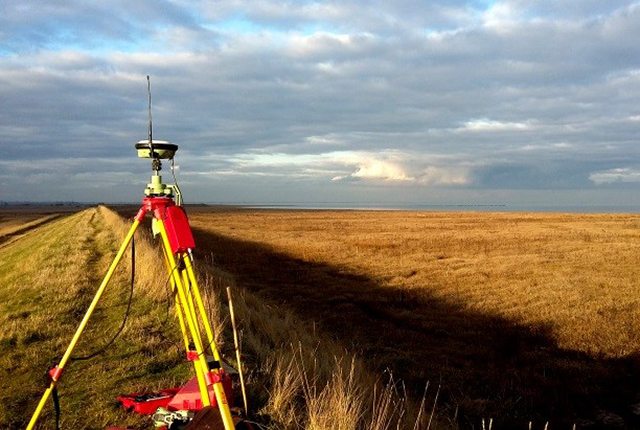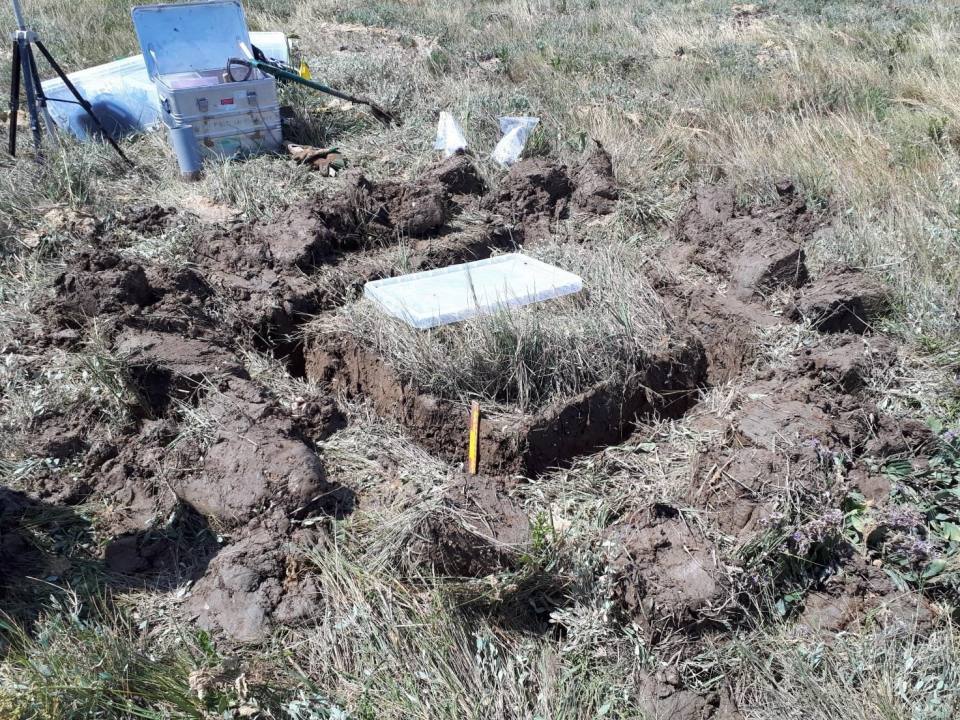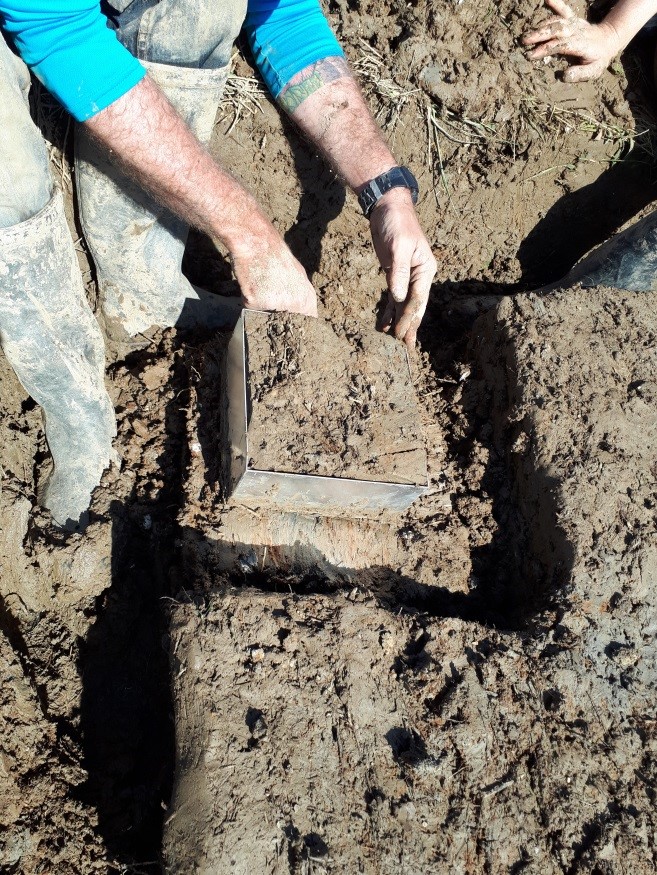Salt-marsh sampling in Essex
Helen Brooks, a PhD student from the University of Cambridge, is conducting research that will improve models that simulate future marsh evolution, particularly in a changing climate.
08/09/2017 By BGS Press
Salt marshes help protect the land behind them from flooding and erosion, however, marsh areas are declining globally. Helen Brooks, a PhD student from the University of Cambridge, is conducting research that will improve models that simulate future marsh evolution, particularly in a changing climate. This will help us to understand whether marshes will continue to protect us from flooding in the future.
Helen’s research concerns the sediment properties and how these relate to erosion resistance. She will look mainly at the sediment shear strength, compressibility, shrink–swell behaviour and plasticity (i.e. how the sediment behaves at different moisture contents). Most of these tests will be done in the lab and will require undisturbed samples, that is a sample that is kept in its in situ condition.
Helen explains:
Essentially, we dig the outside of a pit, leaving the central section untouched (see Figure 1). Then we carefully remove the vegetation and the uppermost sediment (‘carefully’ means ‘using small kitchen knives to remove 2 cm2 chunks of sediment, bit by bit’!). The next step is to place the sampling equipment on the surface, push down gently by 1–2 mm, then scrape the excess 1–2 mm of sediment carefully from around the side of the equipment (see Figure 2). We then repeatedly push down and scrape the excess sediment until the sediment reaches the top of the sample! In total, digging the pit and taking the sample can frequently take three hours. Finally, the samples are wrapped in a lot of bubble wrap, placed on trays and packed in boxes to reduce disturbance during transport.

Figure 1: digging the outside of the pit.

Figure 2: scraping away excess sediment.
Most recently, Helen was sampling at Tillingham Marsh in Essex. She spent two days meticulously taking undisturbed samples in the glorious sunshine before carefully transporting the samples back to Cambridge. The samples were taken from the lower marsh, close to, but not on, the tidal flat.
Helen is now about to start work on these samples at BGS Keyworth. This will involve three weeks of more sample preparation, plus lots of loading the samples into machines that allow her to assess properties such as consolidation, shear strength and shrink–swell behaviour.
If you’re interested in finding out more about Helen’s project, please follow her on X @hbrooks94.



